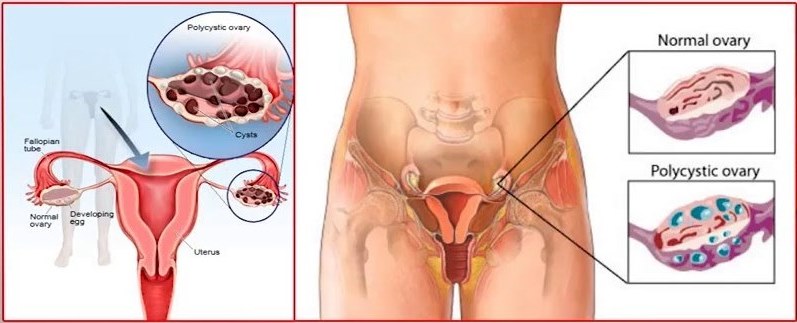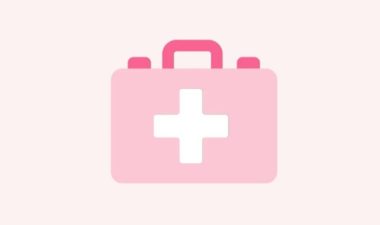Dear readers: This is the first of a two part series on Polycystic Ovary Syndrome (PCOS). Next week look out for our next post on “The PCOS Healthy Diet.” You may scroll down to “Don’t Miss a Publication” and register with us and get the RSS Feed.
WHAT IS POLYCYSTIC OVARY SYNDROME?
Polycystic Ovary Syndrome (PCOS) often appears to be a collection of unrelated symptoms affecting your menstrual cycle, fertility, appearance, and weight. But when you put the puzzle pieces together, you can see not only how the symptoms relate to one another but also how simple lifestyle changes can have a positive impact on them. Unlike many disorders, PCOS can improve if you take steps to manage the causes. Recognizing the symptoms of PCOS early and working on improving insulin resistance through diet and exercise can help prevent complications of PCOS, including infertility.
PCOS SYMPTOMS
Polycystic Ovary Syndrome (PCOS) is described as a syndrome rather than a disease because it shows up as a group of signs and symptoms that can occur in any combination. Here are some of the symptoms of PCOS:
Abnormal Menstrual Cycle: When you have PCOS, your periods may be heavier, lighter, irregular, or absent altogether. However, you may have completely normal periods and still have PCOS.
Weight Gain: In women with PCOS, weight gain is mostly due to high levels of insulin circulating in the blood. Cells normally absorb glucose with the help of insulin. When cells don’t respond normally to insulin, your body produces even more insulin, to “force” the cells into responding. When insulin levels rise, other hormonal changes can lead to increased appetite and decreased fat burning, which lead to weight gain.
Acne And Oily Skin: Women with PCOS tend to have higher levels of androgens (male hormones), which cause acne and increased skin oiliness.
Excess Hair Growth: Your body may be hairier in certain places (such as your chest, thighs, face, and back), a side effect of androgens.
Hair Loss: The hair on your head may thin if you have PCOS, another side effect of higher androgen levels.
Sleep Problems And Fatigue or Exhaustion: These symptoms can be due to fluctuating hormone levels and increased anxiety.
Depression, Anxiety, Irritability And Mood Swings: These symptoms are probably due to disrupted hormone levels.
Fertility Problems: The hormonal imbalances that come with PCOS can disrupt ovulation.
Metabolic Syndrome: Also known as syndrome X, metabolic syndrome is a cluster of symptoms, including insulin resistance (where insulin produced by the body doesn’t work efficiently), high blood pressure, and high cholesterol. It can lead to diabetes and heart disease.
HOW TO MANAGE PCOS
If you’re willing to overhaul your diet and start a simple exercise program, you can gain a great deal of control over your PCOS symptoms. Insulin resistance causes many PCOS symptoms, and diet and exercise help control insulin resistance.
If you’re overweight, lose weight by limiting yourself to 1,500 calories per day. Losing weight is one of the biggest factors in controlling PCOS symptoms, particularly if you’re trying to get pregnant.
Eat regular meals (but don’t pile your plate), and have a couple of small snacks during the day. Don’t let yourself get hungry.
Follow a low-GI diet by substituting low-GI carbs for high-GI carbs. The glycemic index (GI) measures how a carbohydrate affects blood sugar. High-GI foods break down quickly into glucose while low-GI foods are absorbed more slowly. Low-GI foods stabilize your blood sugar, while high-GI foods cause a rapid rise in blood sugar levels. Refined sugars are high-GI foods, while fruits and vegetables are generally low-GI.
Limit the fat in your diet. Cut down particularly on saturated and trans fats (including fatty meat, butter, cakes, pastries, and cookies).
Use as little salt as possible. Look at labels of processed foods to try to keep your total sodium intake below 2,400 milligrams a day.
Eat at least five helpings of fruit and vegetables every day.
Get some physical activity every day. Half an hour is great, but an hour is even better to help keep your weight under control. Remember to start slowly and incorporate both aerobic and weight-bearing exercise into your routine. You don’t have to do all your exercise at one time — 10 minutes of exercise three times a day is just as good as 30 minutes all at once.
PREGNANCY AND PCOS
PCOS can interfere with getting pregnant in a number of ways. You may need to see a fertility specialist to get pregnant if you have no menstrual periods at all, very irregular menstrual periods, or periods that are extremely heavy when they do come. To determine if PCOS symptoms are interfering with your ability to get pregnant, a fertility doctor may
Do an ultrasound of your ovaries. Women with PCOS may have multiple cysts on each ovary — this symptom gives the disorder its name. Cysts form when follicles containing eggs don’t develop and mature properly.
Check the hormone levels in your blood. When you have PCOS, you may have an abnormal ratio of luteinizing hormone (LH) to follicle-stimulating hormone (FSH). This type of hormone imbalance interferes with normal egg production.
Check for physical signs of high insulin levels, which can impact reproductive hormones. Women with high levels of insulin may develop a skin condition known as acanthosis nigricans, dark, velvet-like skin around body folds and creases in areas around the neck, armpits, knees, and knuckles.
TO GET PREGNANT, YOU MAY NEED TO:
Take fertility medications that induce egg development and ovulation. These medications include Clomid, as well as injectable fertility medications called gonadotropins.
Undergo in vitro fertilization (IVF). IVF involves taking medications to improve egg production followed by removal of the eggs from the ovaries after the eggs mature, normally after several weeks. The eggs and sperm are then put together in the laboratory to form an embryo. The embryo is put back into the uterus after two to five days, depending on your fertility clinic’s practices.




